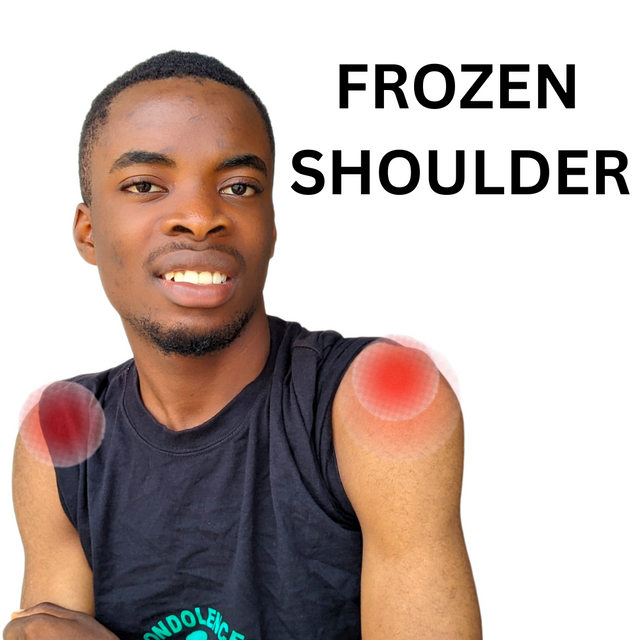
Edited using canva
Imagine waking up one morning and you try to stretch your hand to get your phone on a cupboard, but you can't do so easily as you're feeling a restriction in your shoulder that prevents your arms from moving forward. The pain that results from trying to stretch makes you feel your joints are frozen and can't function properly.
You'll have to get up from your bed and reach the phone. People with similar cases suffer what we call Frozen Shoulder or in medical terms, adhesive Capsulitis. They find it difficult to lift their hands upward, sideways, or even backwards. Their shoulder is stiff and prevents such. So what's a frozen shoulder, if I may be asked?
What's frozen shoulder? Write in your own words after getting knowledge from the lesson post. |
|---|
As explained in the illustration above, a shoulder is said to be frozen when there's inflammation in the tissues around the joint of the shoulder, which makes it thicken and tighten, preventing easy movement as if the shoulder is locked. It's just as if there's a balloon under your arm that prevents you from bringing the hands down.
This frozen shoulder is sometimes caused by injury, surgery, medical conditions like diabetes, etc. that make the shoulder and arm immovable. It doesn't just happen by chance. Something triggers it. For example, in my own case, mine came up as a result of doing exercise. In the course of lifting weight, I compressed my shoulders in a way that my arms could drop straight and I could lift my arm the next day. I noticed this when I saw an inflammation around my shoulder and arm region.
My arm was bigger than the other arm. When such casualties happen, the capsule around the arm thickens and contracts in such a way that it prevents movement and brings about discomfort and so much pain. This can be illustrated if you have a flexible rubber band you can easily stretch to a distance, but in weeks to come, the rubber band is exposed to weather conditions or gets contact with a substance that makes it hard and dried out.
If you want to stretch that rubber band, you'll find it difficult to do so as the flexible one. So, it's compared to a frozen shoulder, where there's rigidity within the joints of one's shoulder. It is also caused by inflammation within the shoulder capsules, as stated earlier. Age is a major factor, as people in the age range of 40 up are prone to experiencing such.
Normal bodily function of the shoulder before it gets frozen
The shoulder is the anchor of the arm, where it's allowed to join and rest on. With the shoulders, the arms can move freely, taking any motion form. It has a ball and socket joint with the clavicle, scapula, and humerus as the major bones connected by a network of muscles and ligaments. This allows movement around the arm and shoulder region because of these connections in bones, joints, muscles, and supported tissues.
The humerus, which is the upper arm, fits head into the shoulder joint, surrounded by a network of flexible capsules of connective tissues that is aimed at providing support and motion.
On a normal level, the flexible capsule can stretch and move freely, which aids the humerus as well. In a situation where the capsule around the joint becomes inflamed and thick, preventing movements within the joints and making it difficult or almost impossible to lift and rotate the arm.
Remember, this capsule of connective tissues is a flexible and loose one, but when the capsule is thickened and tight or there's a reduction in the synovial fluid, which lubricates the joints, keeping them firm and relaxed, the shoulder becomes frozen.
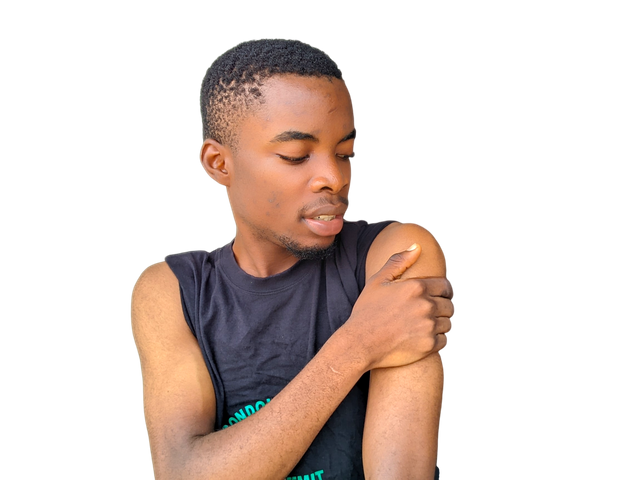
Types
Frozen shoulders are of 2 types with extensions, which include;
We have the primary frozen shoulder which, as the name implies, is one that occurs without any reasonable or obvious cause for it. It affects people mostly from age 40 to 60, especially women, and when such happens, you'll notice it from the gradual changes in your shoulder's movement.
Another type of secondary is quite different from the primary because there's a cause for it, which can be injury, surgery, or the effect of medical conditions that can affect the shoulder and make it frozen. Initially, it is triggered by the source of the cause of the effect, which is then followed progressively.
Stages and Phases
- The stages involved are as follows: When there's increasing pain in the shoulder, it makes it difficult to do simple movements, and it's called the freezing or painful stage which lasts for 6 weeks to 9 months.
The second stage is when the pain reduces but there's maximum stiffness in the shoulder, making it difficult to lift the arm in certain directions. The shoulder in this stage is stuck and rigid. It's called the frozen Stage.
The Thawing stage or recovery stage is when the stiffness around the shoulder decreases and the capsule around the shoulder loosens, which allows limited mobility of the arm. The stages are from the most painful to gradual recovery following certain therapy physically or medically.
How would you diagnose a frozen shoulder? Any clinical investigation or assessment tests? |
|---|
Diagnosing a frozen shoulder is easy, as this can be done through physical examination or medically through x-rays if advanced or severe. This diagnosis usually involves reviewing the affected person's medical history and also examining that person to see if it's something exercise can do away with or something medically inclined.
To diagnose a frozen shoulder, the doctor must first check the medical history of the affected person.
- Checking the medical history involves asking the patient questions about his symptoms, when they started, if he has experienced such before, etc. The main focus is on the intensity of the freezing shoulder and what can relieve it. With the information given by the patient, the doctor can determine which stage the frozen shoulder is.
Let's assume this is my patient, and he tells me he finds it difficult to stretch his hand behind, lift up, or even stretch, and the pain is very severe. Every day, it intensifies. From here, the doctor will perform a physical examination.

- Physical examination involves assessing the patient's shoulder with your hands and then checking the limitations of the shoulder by telling the patient to move his hands upwards and sideways to know if it's actually a freezing shoulder problem. You can assist the patient in lifting his arms in different directions.
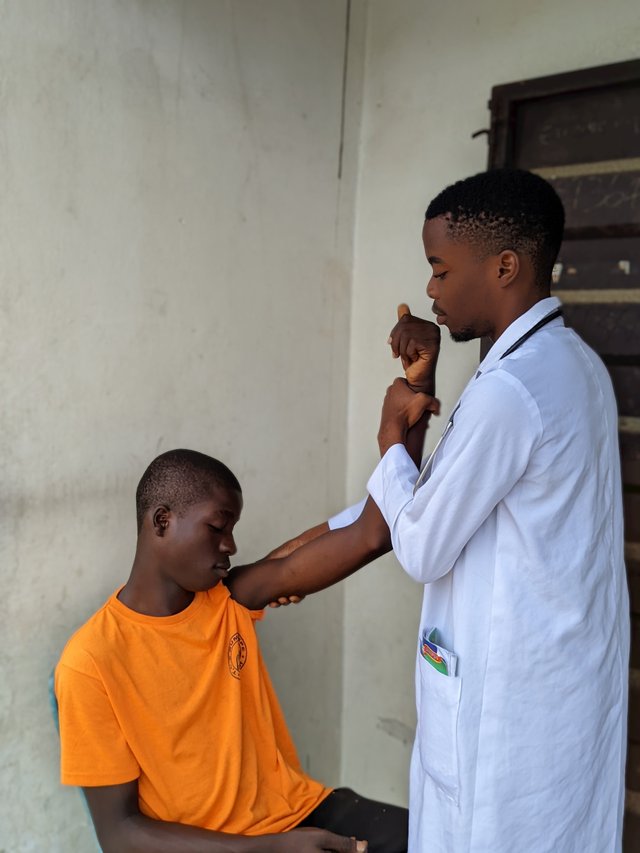 | 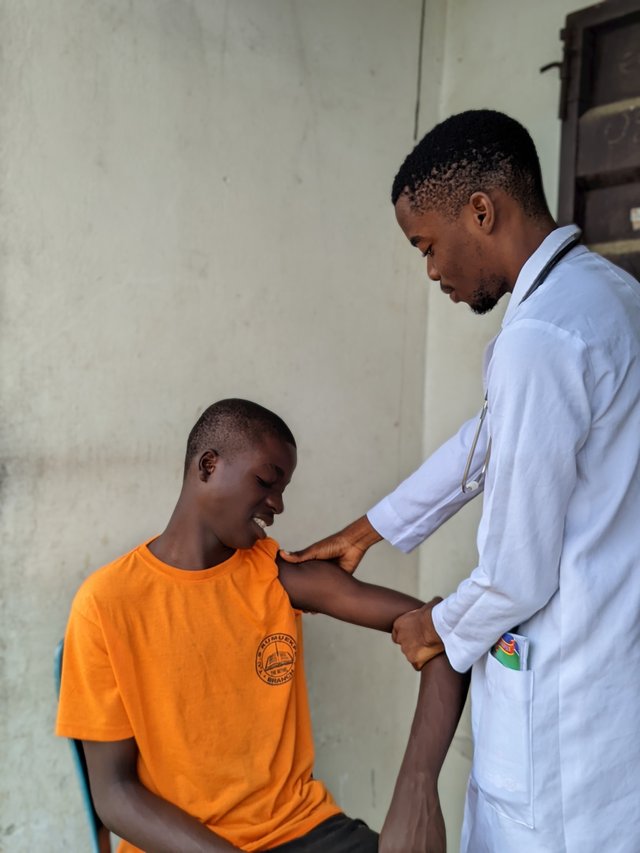 |
|---|
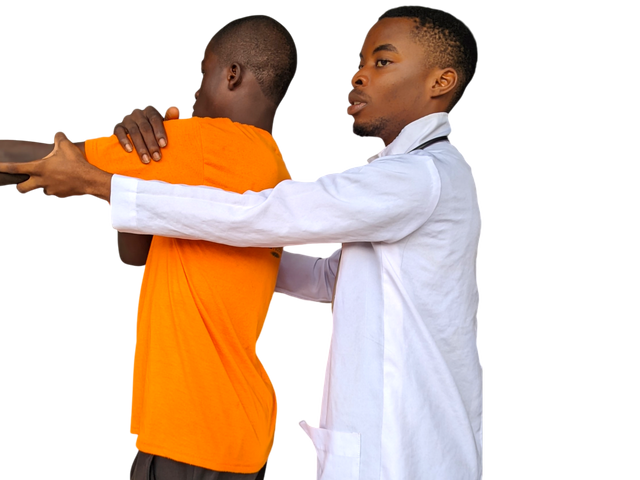
When the patient experiences pain and restrictions from his shoulder and arms, the doctor will know that it's a frozen shoulder. After the physical examination is done, the patient would be told to do some stretches as a hallmark for assessing the shoulder.
- Tests for assessment can be carried out through forms of exercises. The first test is checking the mobility of the shoulder. The patient is to reach behind his back and try touching his opposite shoulder blade. If the patient reaches halfway up the back and finds it difficult to go further or he struggles to do so, we can assume there's stiffness in the shoulder, which is a sign of frozen shoulder.
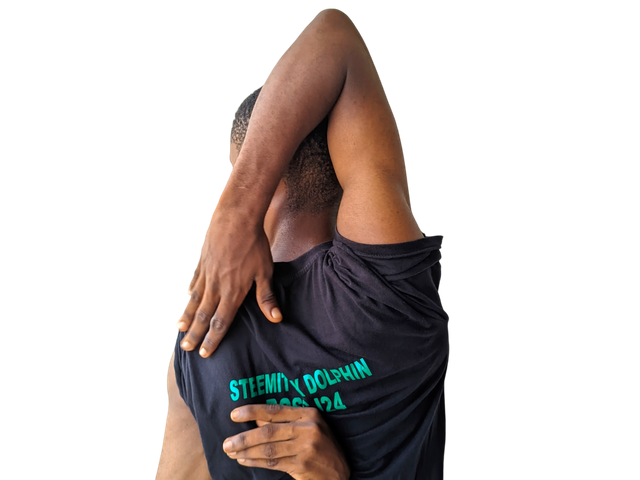 | 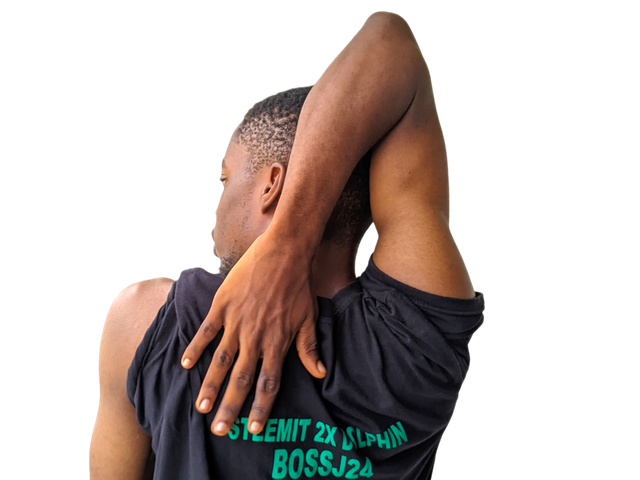 |
|---|
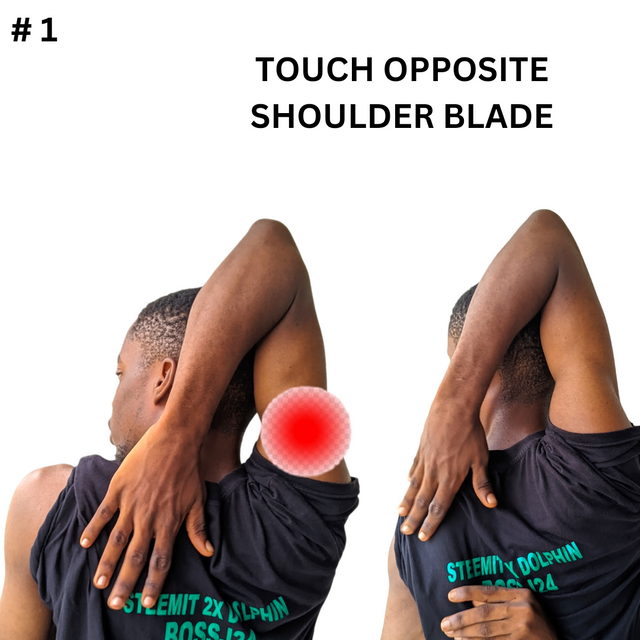
- The next test is carried out by telling a patient to rotate his shoulder outward with his arm at the side to check for restrictions. If there's a restriction, it could possibly be a frozen shoulder, as it's a common case.
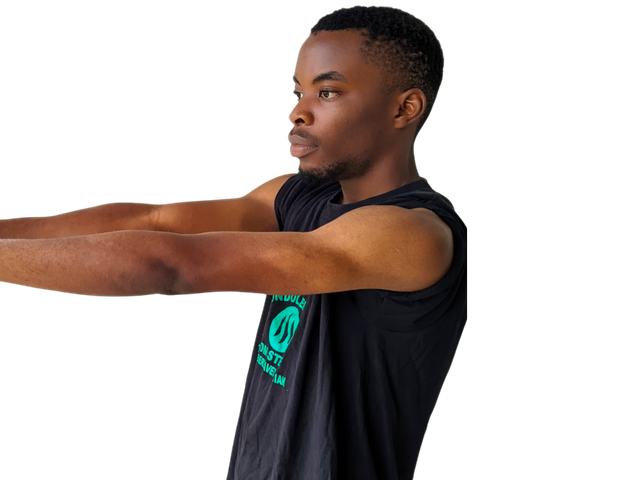 | 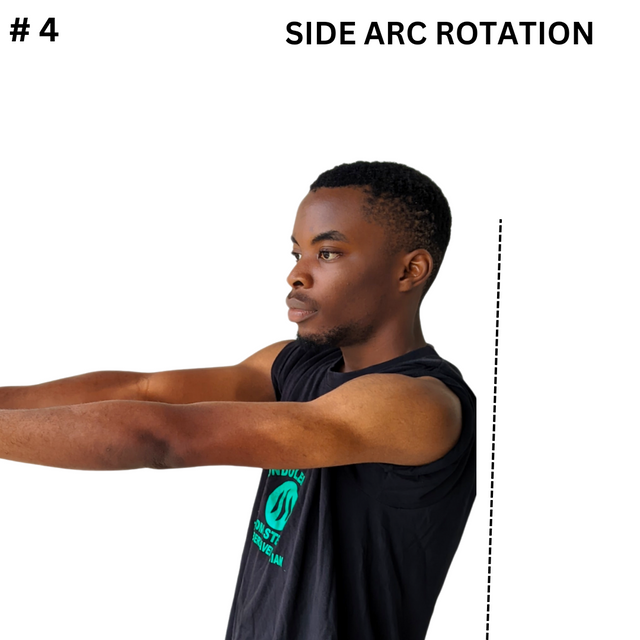 |
|---|
Illustrations: From the picture below, the patient is able to do so, but in a case whereby he can barely rotate his arms outwards due to stiffness, it's possible he has a frozen shoulder. An example is when the patient can't rotate about 45°, which is the normal range for arm rotation.
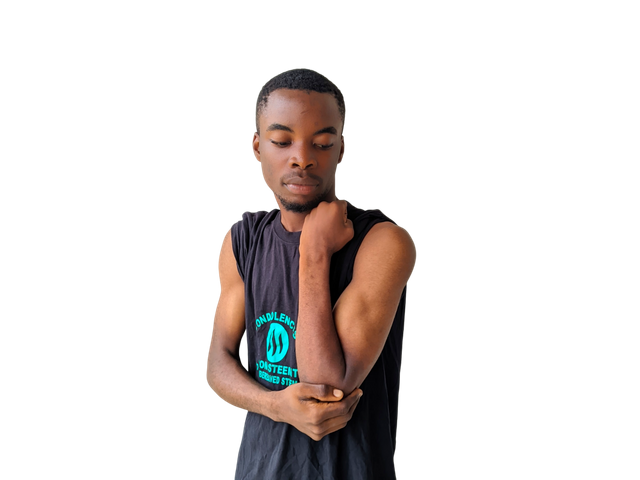
- Painful arc test is carried out where the patient is told to lift the arm forward to his side. An example is a patient finding it difficult to lift the arm and feels sharp pains when he does so. It's only when he lowers his arms or lifts them higher that the pain reduces. If suspending on the air, he finds it difficult, which can be diagnosed as a frozen shoulder as the stiffness prevents abduction.
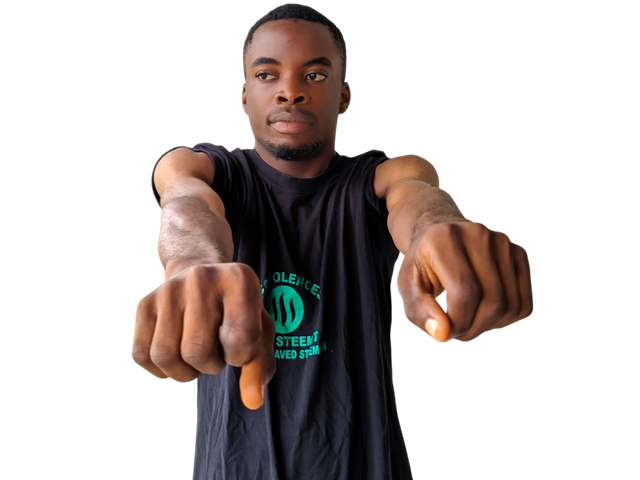 | 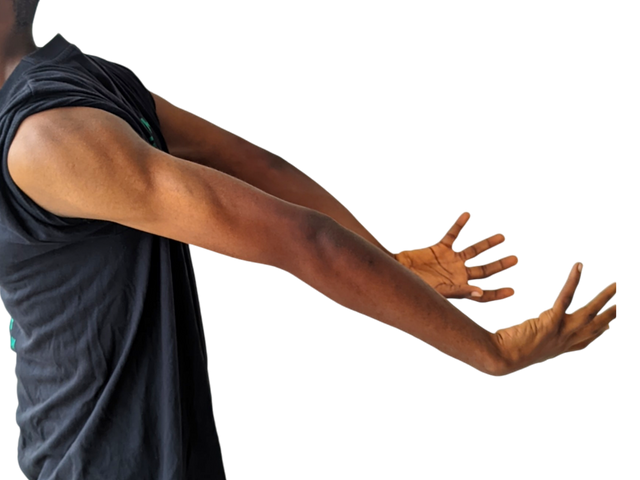 |
|---|
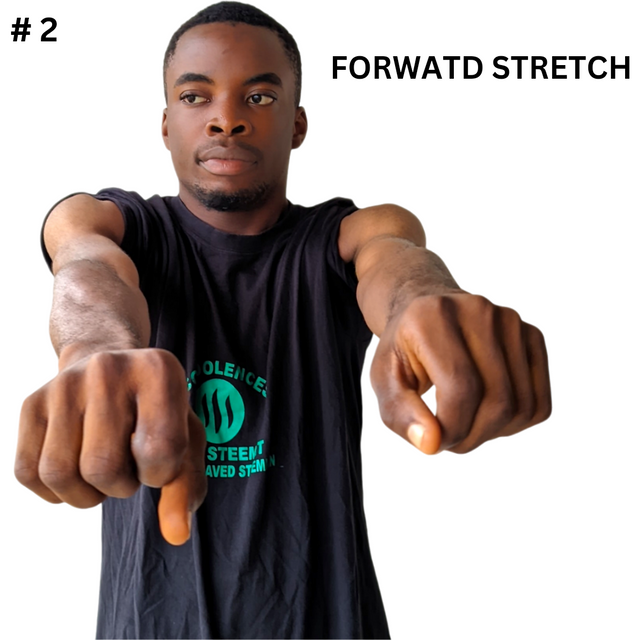
- Another test is carried out internally where a patient is told to move his hands inwards to be on his abdomen mark and then stretch the lower hand forward to form an angle of 90°. If the patient finds so much pain and discomfort doing so, he has a frozen shoulder. An example is when a man tries to lift his hand to attain that angle but finds it difficult to as the movement is limited.
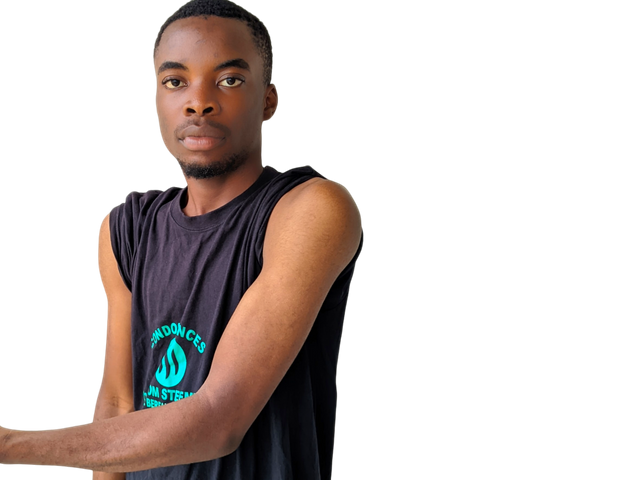 | 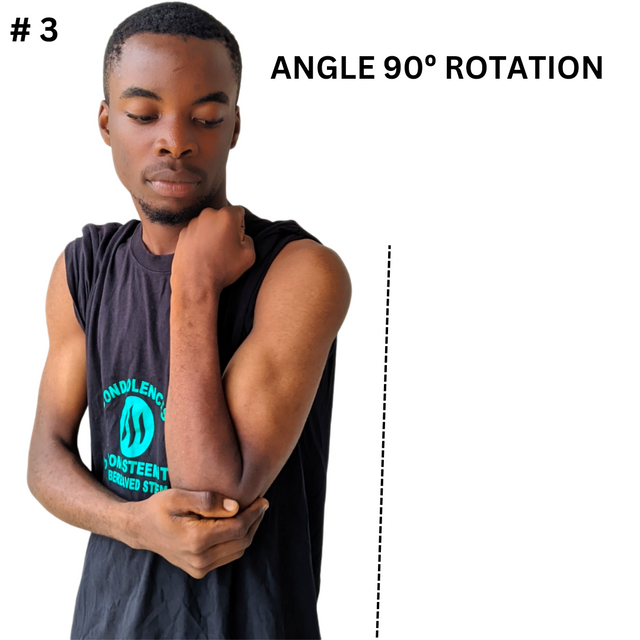 |
|---|
- Cross arm test is carried out to check the flexibility of the shoulder and joint capsule restriction. This is illustrated when the patient is told to move his arms across his body in a scissor form, trying to touch the shoulder. If the person finds it difficult to do so aside from normal body fat, he has a frozen shoulder.
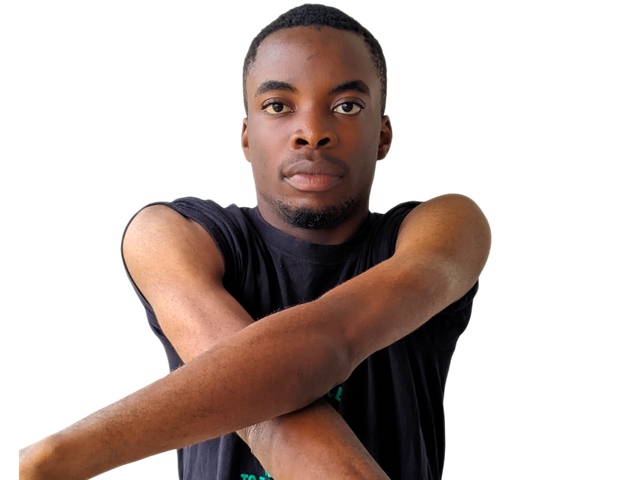 |  |
|---|
In some cases, not all restrictions are a frozen shoulder cause because body size and fats in the body and arm can cause restrictions. People with short hands sometimes find it difficult to move their arms, even people who are obese because of the body fat that seems to be a suspending restriction.
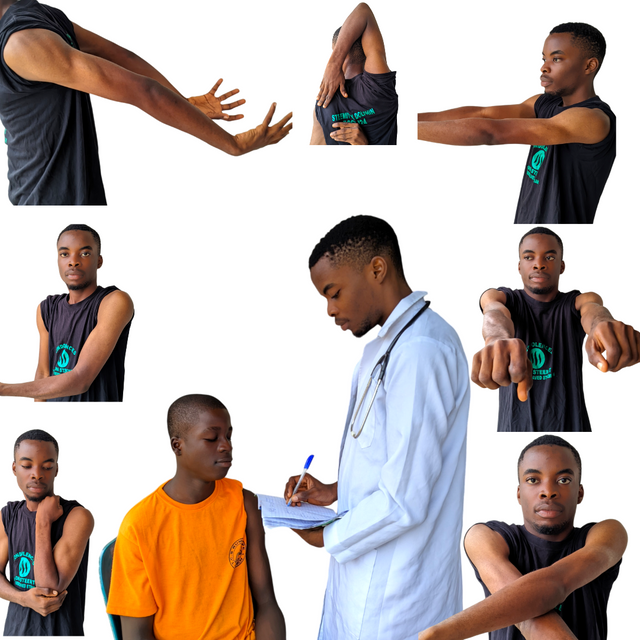
Apart from these assessments, severe pains around such regions can require imaging tests, though not applicable for all cases. This imaging test, with the aid of an x-ray is used to know the exact problem and to be certain that there are no other issues with the bone that's causing this.
X-rayis used to assess the structure of the bone and carried out to exclude bone-related issues since it's diagnosed for frozen shoulder. When the imaging shows no further attachment or bone issue like arthritis, it shows the diagnosis is correct.
The ultrasound can also be used to check for inflammation in the shoulder's joint to see if there's a thickened joint capsule or not. If this is present, it's a sign of a frozen shoulder, and shoulder be taken into special consideration to avoid complications. It's not as detailed in information as the MRI scan test but shows thickening in the shoulder's capsule.
The MRI scan is used to give detailed information or a view of the inflammation and thickening in the joint capsule of the shoulder. It also helps in making a clear image of it, ruling out other shoulder pain that may arise. A CT scan is also used.
| Clinical investigations | Assessment tests |
|---|---|
| Physical examination | Painful Arc Test, Hawkins Test |
| Medicalhistory or records | cross-arm test, speed test |
| Ultrasound, MRI, CT scan, X-ray | External and Internal Rotation Test |
In every research work, there's always reference material. So I'm providing this material I did my research from so you can check for further details.
Try to practice at least 3 exercises that you have learned from the lesson. Share images, gifs or videos while practising. |
|---|
From the tutorial given, about four exercises were given to practically help improve frozen shoulder. Before the introduction of this tutorial, I've been keeping fit and did participate in the just concluded season 20 exercise programs.
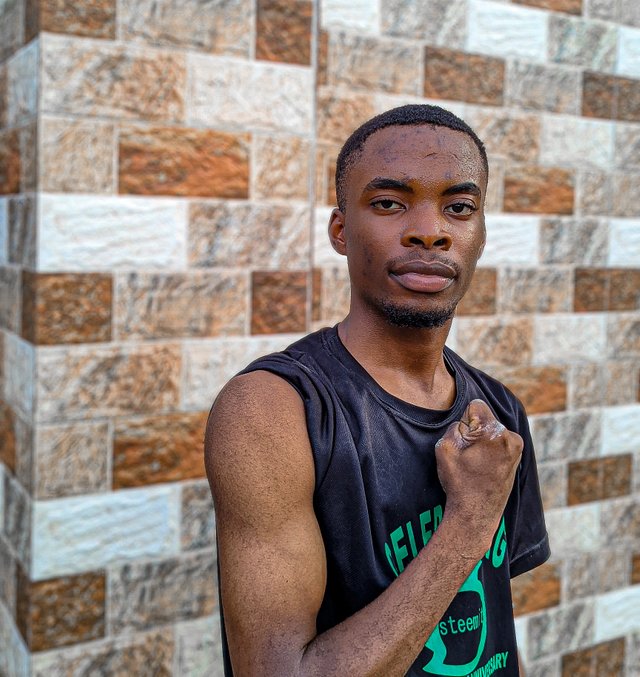 | 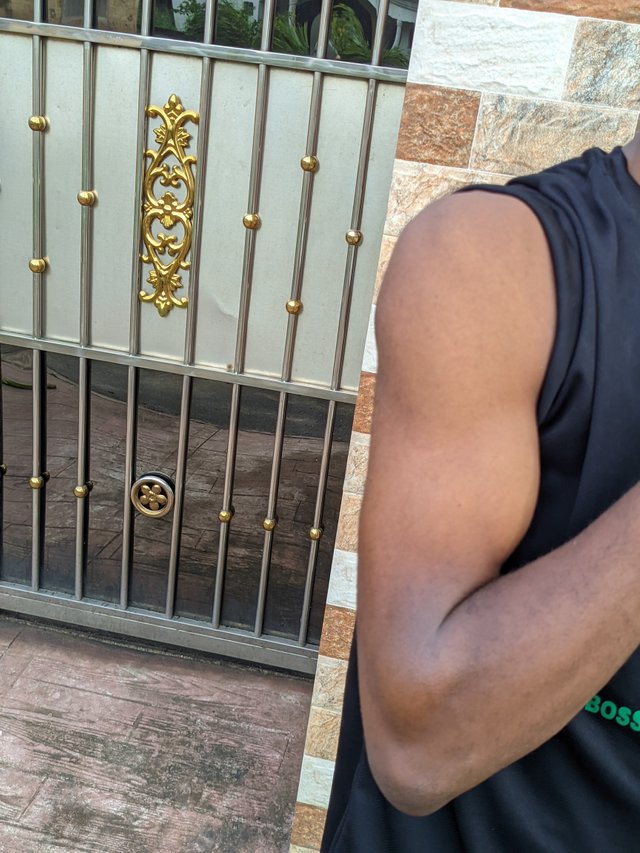 |
|---|
Shoulder muscle improvement was part of the program, and these are my presentations. The program did help me improve my shoulder and made it even more flexible. Here again is an exercise particularly for frozen shoulders.
Cross Body Stretch
These are the ways and steps I took to do the exercise. The first exercise I did was cross body Stretch. I did this by taking one of my lower hands to meet my hand in such a way that it crossed my body slightly.I then took the second hand to touch and held the elbow of the bent hand [left] and then moved the crossed or bent hand to meet the shoulder of the right hand which is the hand placed under the elbow and used to do the motion. I moved it to and fro to strengthen my shoulder muscles.
I did 5 repetitions and actually recorded about 1 minute doing the exercise. I felt my bone cracking softly. The aftermath was productive, I must admit. The second one I did was Wand Shoulder Flexion.
Wand Shoulder Flexion
This was done by stretching out my hands forward in such a way that they are almost close to each other. In the absence of a stick to maintain posture, I did my measurements accurately by placing my hands on the same level and then moving it up and down. I did this more than 10 repetitions as I lasted for a minute. It was kind of relieving as my arms felt some stretch. This is a video of me doing the exercise. The next one I did was Shoulder Circles.
Shoulder Circles
This is more like an internal-external rotation of the shoulder where your whole body isn't moving but your arms alone as they are brought out and rotated in such a way that's both clockwise and anticlockwise. I felt some cracks on my shoulder bone.
It seems they were clashing or so. The exercise was relieving, though. I felt the energy that resulted from doing so. Since the contest said at least 3, I can do more than 3. I did the last program, which is Scapula Retraction.
Scapula Retraction
This is done by suspending your hands to the wall on the same axis while you pull back in such a way that your shoulder and arms can be brought forward and backwards. At first I didn't get it but tried and kept trying till I got the exercise. It was a relief, I would say. My overall experience can be explained not just in words but by my body language.
Share your review after performing these exercises either on a healthy individual or patient. |
|---|
I'm a healthy individual who's always passionate about staying fit at all times and not being so stiff as a result of not exercising. So I'm used to these shoulder exercises as we've been practicing them in our Stayfit fitness club. From the four exercises done, I would say I felt no pain, just the soft cracking or clashing of my bones I heard. The exercise gave me some revived energy and exposed my arms to much work.
You know the arms are always in constant motion but mostly downwards, which can cause stiffness. The exercise made it possible for my arms to be raised up high other than just doing flaccid movements. Though I didn't do it for long to feel the pain and compression, I was happy my arms went up and down, and since there were no specifications as to how long we were to do the exercise, I did it practically for one minute.
It doesn't end here. The contest has helped me see what causes frozen shoulders and how it can be inflicting in terms of pain. Regular exercise of the arms and shoulders can prevent such from happening easily. It can also help reduce the pain and possibility of experiencing such. So I'll be doing this exercise on a weekly basis even though this particular course 1 is coming to an end. Thanks to the mentor for such an opportunity.
I invite @sahmie, @wakeupkitty and @artist1111
_All images were captured and edited on Canva
Cc,
@ahskhan
Thank you for understanding the lesson and sharing your assignment; I hope that you will enjoy this week's lesson and try to implement it in your life if you see any such case.
Observations
Task 1 (2.8/3)
You have shared a great knowledge about frozen shoulder, its second name, stages and types in detail. But there are 4 stages of a frozen shoulder. The first one is a pre-freezing stage. You need to add a bit more depth about the frozen shoulder. I appreciate your effort.
Task 2 (2.7/3)
In the second question, it's the first participation of any user who shares the details of physical examination, investigations and special tests to make a final diagnosis. You answer this question well. Good.
Task 3 (3.9/4)
You try the wand shoulder flexion, shoulder circles, cross-body stretch, and scapula retraction in a good way. But I think your left shoulder is bit stiff or tight due to muscles as I have seen in video. Perform these exercises daily to improve that. Remember to always apply a heating pad before performing these exercises. I appreciate your efforts.
Overall you made a good try to answer all the questions. It would be better to add a few movements in your daily routine that improve your shoulder movement. I appreciate your efforts. But next time try to avoid the above written suggestions. Keep learning and try to implement your knowledge to the people suffering from any shoulder pathology or who suffer from such a condition. Thank you.
Downvoting a post can decrease pending rewards and make it less visible. Common reasons:
Submit
It's a strange name for an infection and it turns out it occurs in most cases between 40-60 years old + with those having diabetes mellitis.
Fase 1: 4-9 months, fase 2 up to 12 months and fase 3 several years. So if you have this once you are 60 you can be recovered before you die?
With us they do nothing, say on x-ray can't be seen anything and painkillers will only be given if the pain (worst at night) is not within the limits (I wonder who decides).
You've been busy again! I like your photos. How did you delete the background?
Good luck to you!
🤩🍀♥️
Downvoting a post can decrease pending rewards and make it less visible. Common reasons:
Submit
I want to appreciate the fact that you love my creativity in photos and the way the post is outlined. Concerning the x-ray you said, most people in my country fear x-ray especially when they hear that cancerous cells can be transmitted as a result of the radioactive rays which can affect the brain or any part of the body.
As to this, I'll back the answer up with experience though it doesn't work for everyone depending on individual limitations at that age. I know of a man who through the aid of fitness on a daily basis slowly recovered from frozen shoulder. Though the recovery isn't complete but he can do basic movements with his arms.
I use photoroom to remove background on my pictures
Downvoting a post can decrease pending rewards and make it less visible. Common reasons:
Submit
In the second fase they can give physiotherapy so that fits with the movement but it's slow recovery and one can save the money (expensive here and rarely result) if it heals slowly as well.
Never heard of photoroom. I have a look. Thanks for the reply.
🍀♥️
Downvoting a post can decrease pending rewards and make it less visible. Common reasons:
Submit
Wow. Not really seen a case of someone with frozen shoulder but I've been hearing. The physiotherapy is a great deal and I feel this would really help me when I grow older to avoid complications. Thanks for the back to back comment. I've learnt 3 things from your comment. I really appreciate
Downvoting a post can decrease pending rewards and make it less visible. Common reasons:
Submit
You are welcome. A great day to you, it was good reading you.
Downvoting a post can decrease pending rewards and make it less visible. Common reasons:
Submit
This kind of blog take too much efforts that I can feel. You did a great job and organized this blog with perfect photos and videos. I appreciate and I wish you get appreciation from our honorable curators sc01 and sc02. Good luck my friend!
Downvoting a post can decrease pending rewards and make it less visible. Common reasons:
Submit
I really appreciate ma'am. Thanks a lot for the comment. I hope I see appreciation for this work too.
Downvoting a post can decrease pending rewards and make it less visible. Common reasons:
Submit
Hi! Wow I can tell from reading your post that you did a lot of research on the topic and put a lot of effort into your post, it contains very valuable content. Suffering from it for sure is very painful, luckily it has never happened to me, it is important to stay active and take care of our shoulder to prevent future ailments.
Have a nice day!
Downvoting a post can decrease pending rewards and make it less visible. Common reasons:
Submit
Thanks for your comment. It took me 3 good days to come up with this creativity and writeups. I just love creating impact in what I do not just the visibility. I hope this medical disorder happens to none of us. Thanks for stopping by.
Downvoting a post can decrease pending rewards and make it less visible. Common reasons:
Submit
https://x.com/bossj23Mod/status/1854725986111148468?t=9vsiIoebBeRdAqziE_RgWQ&s=19
Downvoting a post can decrease pending rewards and make it less visible. Common reasons:
Submit